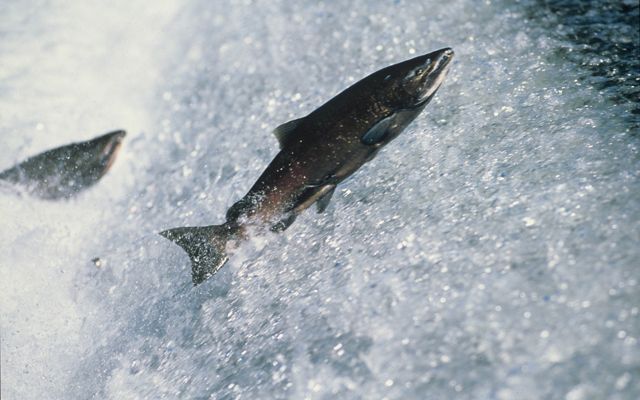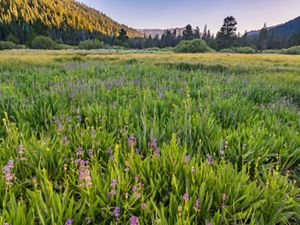Top Five Must-See Migrations in California
Witnessing the annual migration of these iconic animals back to our state is a beautiful thing.
It's spring, and that means the animals of the world are in motion again—flying, swimming, running and crawling to their summer homes and breeding grounds. The Nature Conservancy is celebrating this annual pageant of nature with a listing of the “Top Five Must-See Migrations” in California.
"Witnessing the annual migration of these iconic animals back to our state is a beautiful thing. It makes the work we do to benefit both people and nature all the more worth it,” said Mike Sweeney, executive director of TNC in California.
“It reminds us that our work to protect plants and wildlife must go beyond California because these creatures—whether it’s the three-foot-high sandhill crane or the delicate monarch butterfly—spend part of their lives in other spots around the globe.”
The Top Five Must-See Migrations for California

1. Pacific Flyway
Every year, millions of birds—more than 350 species—traverse the Pacific Flyway, one of four major migratory bird routes in the Americas.
The Pacific Flyway extends from Patagonia to Alaska, and birds such as herons, egrets, bald eagles, warblers, swallows, tanagers and flycatchers—just to name a few—can be found at various California parks, including the Carrizo Plain, along their way.


2. Salmon
One of the most spectacular migratory species, Chinook salmon—whose spring runs were once so large that Native Americans patterned their lives around them—can now rarely be seen in the Sacramento River in March, April and May.
Salmon runs have been declining in California for years, alarming conservationists and fisheries. Collapse of the fall salmon runs—for which no definitive reason has been found—have prompted the state to shut down ocean fisheries of the species for the past few years in hopes of population resurgence.
But in Butte Creek, Deer Creek and Mill Creek—tributaries of the Sacramento River—these salmon can sometimes still be seen, thanks in part to TNC's restoration efforts. Butte Creek in particular seems to be unaffected by the crisis and is one of the best spots to see these glittering fish wriggle their way back to the place of their birth to spawn.
Learn more about how we are protecting salmon and steelhead in the Navarro River.
3. Sandhill Cranes
The magnificent sandhill crane is one of the iconic species that returns to California by the thousands each year, sometimes traveling 350 miles a day.
One of the oldest living species of birds in the world—fossils of this bird date back 10 million years—the sandhill crane, with its characteristic red-crowned head, stands four feet tall and has a wing span of more than six feet. Sandhill cranes are on the endangered species list, predominantly due to habitat loss.
A favorite of birdwatchers, they breed in Alaska and spend the winter and early spring in locations throughout the state of California, including the Cosumnes River Preserve, Staten Island and the Carrizo Plain, which are some of the best places to view these majestic creatures.

4. Gray Whales
Whales are an awe-inspiring species, and gray whales don’t disappoint during their Pacific spring migration. The migration of gray whales—which can grow to be up to 50 feet long—is in full swing from March to May, as they head from their nursery grounds in Baja, California, to their feeding grounds in Alaska.
These magnificent creatures make this roundtrip migration of more than 10,000 miles in groups, with pregnant cows migrating about a month before other adults and juveniles.
During their migration, gray whales can be seen from the coast—especially in places like San Diego, Monterey and Half Moon Bay.

5. Monarch Butterflies
After living off their fat reserves all winter, monarch butterflies leave their winter home of Mexico and begin a long journey north to breed. As they migrate, monarchs are looking for milkweed—the only plant that the larvae eat.
Monarchs can be spotted all over the state. So keep a lookout for the telltale orange-and-black markings of this butterfly, whose wings are sometimes faded from its long journey. Make sure not to confuse a monarch with a viceroy, however; viceroys are usually smaller than monarchs, are more skittish when they fly and have a band across their hindwings.



